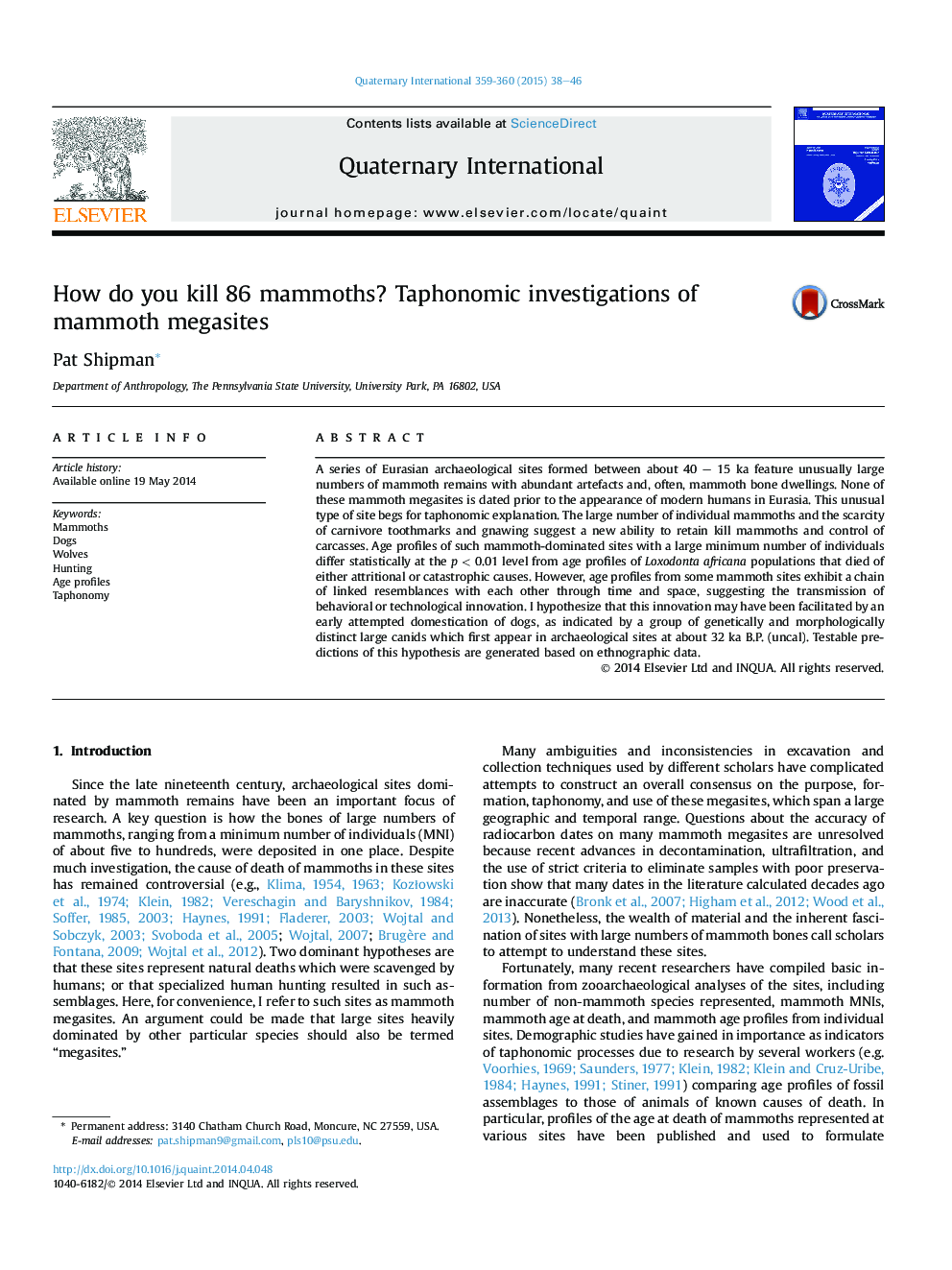| Article ID | Journal | Published Year | Pages | File Type |
|---|---|---|---|---|
| 1040968 | Quaternary International | 2015 | 9 Pages |
A series of Eurasian archaeological sites formed between about 40 – 15 ka feature unusually large numbers of mammoth remains with abundant artefacts and, often, mammoth bone dwellings. None of these mammoth megasites is dated prior to the appearance of modern humans in Eurasia. This unusual type of site begs for taphonomic explanation. The large number of individual mammoths and the scarcity of carnivore toothmarks and gnawing suggest a new ability to retain kill mammoths and control of carcasses. Age profiles of such mammoth-dominated sites with a large minimum number of individuals differ statistically at the p < 0.01 level from age profiles of Loxodonta africana populations that died of either attritional or catastrophic causes. However, age profiles from some mammoth sites exhibit a chain of linked resemblances with each other through time and space, suggesting the transmission of behavioral or technological innovation. I hypothesize that this innovation may have been facilitated by an early attempted domestication of dogs, as indicated by a group of genetically and morphologically distinct large canids which first appear in archaeological sites at about 32 ka B.P. (uncal). Testable predictions of this hypothesis are generated based on ethnographic data.
